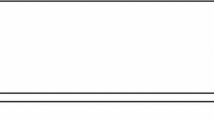Abstract
A mathematical model was developed to describe the rate processes involved in the disposition of drugs placed in their delivery systems into the human nasal cavity. The model contains first-order parallel and sequential irreversible rate processes representing the convective drug and carrier transport by fluid flow, mucociliary clearance and peristalsis, drug release and absorption, and decomposition of the drug prior to its appearance in the systemic circulation. The numerical values of the parameters used are based on literature data from clearance studies of nonabsorbable markers deposited in the human nasal cavity, and data obtained under a variety of experimental conditions are consistent with the model. The effect of bioadhesive carriers is successfully simulated by reducing the mucociliary clearance rate constants for the transport from the posterior part of the nose into the gastrointestinal tract. The simulation shows that bioadhesion improves bioavailability and reduces the variability in absorption which might be caused by a variable pattern of deposition in the nose. Variable bioavailability could result from removal of the drug from the nasal cavity by sniffing, blowing, or wiping the nose, leading to different drug residence times in the nose. The model simulations further suggest that drug decomposition in the nose, while lowering bioavailability, also reduces variable absorption due to variable residence times of the drug in the nose.
Similar content being viewed by others
REFERENCES
Y. W. Chien and S.-F. Chang. In Y. W. Chien (ed.), Transnasal Systemic Medications. Fundamentals, Developmental Concepts andBiomedical Assessment, Elsevier, Amsterdam, 1985, pp. 1–99.
Y. W. Chien and S.-F. Chang. CRC Crit. Rev. Ther. Drug Del. Syst. 4:67–194 (1987).
A. S. Harris, M. Ohlin, S. Lethagen, and I. M. Nilsson. J. Pharm. Sci. 77:337–339 (1988).
K. S. Su, K. M. Campanale, L. G. Mendelsohn, G. A. Kerchner, and C. L. Gries. J. Pharm. Sci. 74:394–398 (1985).
K. S. Huang, R. Kimura, R. B. Nassar, and A. Hussain. J. Pharm. Sci. 74:608–611 (1985).
T. Ohwaki, H. Ando, S. Watanabe, and Y. Mijake. J. Pharm. Sci. 74:550–552 (1985).
N. Mygind. In F. Morén, M. T. Newhouse, and M. B. Dolovich, (eds.), Aerosols in Medicine. Principles, Diagnosis and Therapy, Elsevier, Amsterdam, 1985, Chap. 1, pp. 1–20.
P. R. Byron. J. Pharm. Sci. 75:433–438 (1986).
I. Gonda. J. Pharm. Sci. 77:340–346 (1988).
I. Gonda. In Controlled Release: Science and Technology, Proc. Symp. Polymer Div. RACI, Melbourne, 1988.
G. Stephenson. Mathematical Methods for Science Students, Longman, London, 1970, pp. 353–398.
A. D. Smith and M. C. Thorne. Pharmacodynamic Models of Selected Toxic Chemicals in Man. Vol. 2. Routes of Intake and Implementation of Pharmacokinetic Models, MTP Press, Lancaster, 1986, Chap. 6, pp. 132–269.
F. A. Fry and A. Black. Aerosol Sci. 4:113–124 (1973).
A. A. Hussain, R. Bawarski-Nassar, and C. H. Huang. In Y. W. Chien (ed.), Transnasal Systemic Medications. Fundamentals, Developmental Concepts and Biomedical Assessment, Elsevier, Amsterdam, 1985, pp. 121–137.
V. H. L. Lee. In S. S. Davis, L. Illum, and E. Tomlinson (eds.), Delivery Systems for Peptide Drugs, Plenum Press, New York, 1986, pp. 87–104.
L. Illum. In S. S. Davis, L. Illum, and E. Tomlinson (eds.), Delivery Systems for Peptide Drugs, Plenum Press, New York, 1986, pp. 205–210.
J. G. Hardy, S. W. Lee, and C. G. Wilson. J. Pharm. Pharmacol. 37:294–297 (1985).
A. S. Harris, I. M. Nilsson, Z. G. Wagner, and V. Alkner. J. Pharm. Sci. 75:1085–1088 (1986).
N. Mygind and S. Vesterhauge. Rhinology 16:1–10 (1978).
P. Wilkinson, C. Van Dyke, P. Jatlow, P. Barosh, and R. Byck. Clin. Pharmacol. Ther. 27:386–394 (1980).
V. H. L. Lee. CRC Crit. Rev. Ther. Drug Del. Syst. 5:69–97 (1988).
Author information
Authors and Affiliations
Rights and permissions
About this article
Cite this article
Gonda, I., Gipps, E. Model of Disposition of Drugs Administered into the Human Nasal Cavity. Pharm Res 7, 69–75 (1990). https://doi.org/10.1023/A:1015891727080
Issue Date:
DOI: https://doi.org/10.1023/A:1015891727080




